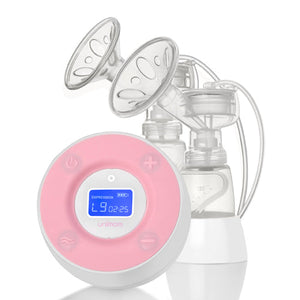Breast pumping is vital to breastfeeding, and having the right breast pump flange is critical for comfort and efficiency.
At MoovKart, We recognize the value of selecting the ideal solution for your pumping requirements. That’s why we have a suitable breast pump collection for every mom.
Let's review everything you need to know about measuring the flange size and breast pump flanges.
What is a Breast Pump Flange?
A breast pump flange, or a breast shield, is a funnel-shaped piece that fits over your nipple during pumping. It creates a seal around the nipple, allowing suction to draw milk from the breast.
Flanges are available in various sizes, usually between 15 and 36 mm. Most standard pump kits include a 24mm flange, but it is crucial to ensure it fits correctly for optimal pumping.
Why Flange Size Matters?
Women's breasts are different, so finding the correct flange size matters.
Using an incorrect size can cause discomfort, skin irritation, and even impact milk flow.
A flange that is too big can provide inadequate suction and discomfort, while a flange that is too small might cause irritation and pain.
How to Measure Your Flange Size? 11 Steps
Measuring your nipple is essential for determining the correct flange size. Use a tape measure or ruler, focusing on the nipple's base without including the areola.
Your body may change after pregnancy, so it's normal for your flange size to change too.
1- Gather Materials
Collect a tape measure or ruler and ensure you have a comfortable space to measure without interruption.
2- Prepare Yourself
Wash your hands thoroughly to ensure cleanliness. Although unnecessary, you may also want a mirror handy for better visibility.
3- Position Yourself Comfortably
Choose a chair that is comfortable for you and allows you to access your breasts for measuring easily. You might sit on a chair with good back support or on a bed with pillows behind your back.
4- Expose Your Nipple
If you are wearing clothing that covers your breasts, gently remove it to expose your nipple. You want to have easy access to measurement.
5- Select a Measurement Method
Decide whether to measure vertically (up and down) or horizontally (left to right) across your nipple. Both methods are valid, but it's essential to be consistent in your approach.
6- Measure Vertically
If you take a vertical measurement, press the ruler or tape measure against the base of your nipple. Ensure it's snug but tight enough. Note down the measurement in millimeters.
7- Measure Horizontally
Alternatively, if you opt for horizontal measurement, position the tape measure or ruler against the base of your nipple and extend it sideways. Again, ensure it's snug but comfortable, and record the measurement in millimeters.
8- Compare Measurements
If you measured vertically and horizontally, compare the two measurements. Choose the larger measurement as your final nipple diameter. It ensures you use the most accurate measurement when selecting your flange size.
9- Exclude Areola Measurement
You should focus solely on measuring your nipple and exclude any measurement of the areola, the darker area surrounding the nipple. Including the areola can lead to inaccurate sizing.
10- Consult Manufacturer's Guidelines
Some breast pump manufacturers provide specific instructions or tools for measuring flange size. Check if your pump's manufacturer offers such resources and follow their guidelines if available.
11- Select Flange Size
Once you have your nipple diameter measurement, refer to the sizing chart your breast pump manufacturer provided. Choose the flange size closest to or slightly larger than your measured nipple diameter.
How to Ensure the Right Flange Fit?
The correct flange size should feel comfortable, with only your nipple entering the pumping tube. Your nipple shouldn't rub against the tube's sides, and you shouldn't experience any pain while pumping.
If the flange doesn't fit correctly, you may notice nipple rubbing, pain, or other discomforts.
Lactation professionals recommend the "COMFY" test to check for the proper fit:
- C – Center Nipples Move Freely. The tunnel's sides shouldn't rub against your nipple while it moves freely.
- O – Only a Little Areola Tissue Should be Pulled Into the Tunnel. Your areola should mostly stay outside of the suctioned area.
- M – Motion of Your Breast is Gentle and Rhythmic. Your breast should move gently with the pump's rhythm.
- F – Feels Comfortable Breast Pumping. Tenderness or soreness shouldn't result from pumping.
- Y – Yields Well-Drained Breasts. After pumping, your breasts need to feel emptied and lighter.
Finding the correct flange size allows for a more comfortable and practical pumping experience and optimal nutrition for your little one.
People Also Ask!
What happens if I use the wrong flange size for my breast pump?
Using the wrong size might cause discomfort, decreased milk flow, and unproductive pumping.
How can I be sure I choose the right breast pump for my needs?
Consider factors like pump type (manual or electric), suction strength, portability, and compatibility with flange sizes.








